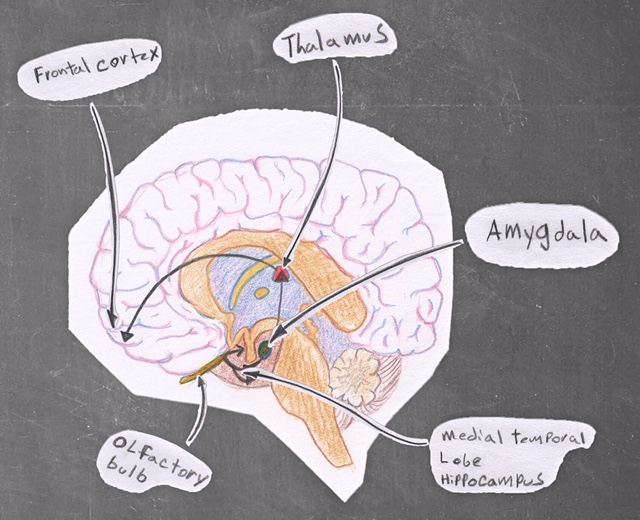Post by Emma Schifsky, Oregon Health & Science University

Emma is a Research Assistant in the Fair Neuroimaging Lab at OHSU, and recently joined Noggin at the MacLaren Youth Correctional Facility for discussions with young people incarcerated under Oregon’s Measure 11.
I enjoyed our visit to the MacLaren Youth Correctional Facility, and thoroughly appreciated the chance to answer many questions about brain anatomy and neurons…

LEARN MORE: Corrections, Bias & Brains
But my favorite part was discussing neuroscience in relation to these youths’ lives. Many of the kids made “This is your brain!” jokes to their friends when holding the small chicken or fish brain and I explained how intelligence actually can’t be measured by brain size. This led to more discussions about which factors do affect intelligence, and how we might define and measure intelligence. Most kids were interested in the effects of drugs on the adolescent brain and a few seemed to fear that their own drug use consequences might be permanent. I explained how drugs definitely alter brain development during adolescence; however, during this time the brain is also extremely plastic and adaptable, which seemed to make them feel better about themselves and their future.

LEARN MORE: Adolescent Brain Development and Drugs
LEARN MORE: The influence of substance use on adolescent brain development
LEARN MORE: Brain Plasticity in the developing brain
They were also interested in why they felt the need to take drugs and I explained how drugs of abuse activate the brain’s reward system. This activation produces feelings of pleasure that lead to changes in your brain that cause addiction, in order to continue to activate your brain’s reward system.

LEARN MORE: Neurobiology of addiction
LEARN MORE: Structural plasticity associated with exposure to drugs of abuse
Some of the stories these young people shared were truly heartbreaking, from having insomnia due to hearing gun shots every night to having at least one parent in jail throughout their entire life. Many of these kids have experienced intense trauma and stress that has the potential to significantly alter the healthy trajectory of adolescent brain development.
LEARN MORE: The Biological Effects of Childhood Trauma

Detail from art by Kanani Miyamoto: Cortisol molecule & neurons in the brain
LEARN MORE: The Art & Science of Stress @ Velo
These youth are interested in referencing evidence-based neuroscience research in order to oppose Oregon’s Measure 11, which established mandatory minimum sentences for crimes deemed serious against persons and required defendants aged 15 and older to be tried as adults. I think a significant argument is the fact that not only are healthy 15 year olds brains not fully developed, 15 year olds who have experienced significant trauma have the potential to have even less developed brains. Using fMRI, my lab investigated how under emotional states adolescents on average demonstrated a reduction in predicted brain age from their true age and this phenotype of a younger brain age during emotional states predicted risk preference and perception. The title of this study is “At risk for being risky,” which signifies that adolescents whose brains respond to emotional situations in a less developed way for their age are more at risk for participating in risky behaviors.
LEARN MORE: At risk for being risky
This study can be applied to incarcerated youth that are not only adolescents, but also experience traumatic upbringings that can impact typical brain development and emotional regulation, so under stressful situations these youths are potentially even more at risk for being risky or committing crime. One can argue that this risk is not at all the fault of youth, but they simply lack the emotional tools to deal with stressful situations due to a traumatic environment that inhibits the healthy development of all brains. Oregon’s Measure 11 fails to recognize this fact, and instead treats these youth as if their brains are those of fully developed adults.

Here are some additional resources for young people at MacLaren to utilize as a defense against Oregon’s Measure 11, and also links to national organizations using scientific evidence for juvenile justice, such as the MacArthur Foundation Research Network on Adolescent Development and Juvenile Justice and the Juvenile Law Center.
LEARN MORE: Juvenile Justice & the Adolescent Brain
LEARN MORE: Rewiring juvenile justice: the intersection of developmental neuroscience and legal policy
LEARN MORE: Juvenile Justice Reforms Should Incorporate Science of Adolescent Development


